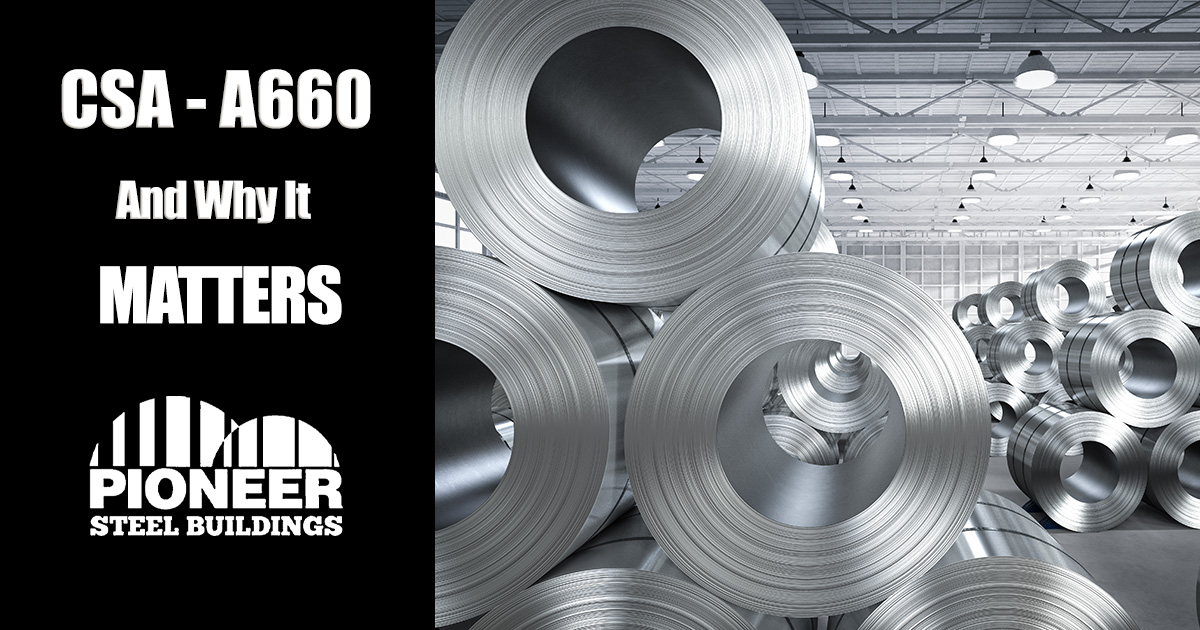
If you’re comparing steel buildings in Canada, CSA-A660 is the quality benchmark you will see repeatedly. In plain terms, it is a national standard that certifies a manufacturer’s capability to design and fabricate complete Steel Building Systems. Unlike a product label you stick on at the end, A660 looks upstream at the people, procedures, and controls that create your building, and it verifies—through third-party audits—that those systems meet Canadian requirements.
What the Certification Audits and Verifies
CSA-A660 focuses on the manufacturer, not just the finished shell. To earn and keep certification, a company must demonstrate qualified engineering oversight; controlled purchasing and materials traceability; documented design practices that apply the relevant Canadian codes and loads for the actual site location; qualified welding and fabrication processes; inspection and testing plans; and clear procedures for packaging, shipping, and erection documentation. Auditors return annually to confirm the quality system is active and effective, so buyers are not relying on a one-time promise.
Your Certificate of Conformance: Proof for Your Project
One practical outcome matters to every owner and building official: the Certificate of Design and Manufacturing Conformance. For each project, the certified manufacturer must supply a signed and sealed document confirming that the building was engineered and manufactured to the applicable codes and to CSA-A660. That certificate accompanies the engineered drawings in permit submissions and provides a traceable record for the life of the building. It is your assurance that wind, snow, seismic, and foundation interface loads have been addressed for your address.
How A660 Connects to Canadian Building Codes and Permits
Because the National Building Code of Canada references CSA-A660 for Steel Building Systems, many authorities’ having jurisdiction looks for this certification during permit review. That can translate into a smoother approval process, fewer back-and-forth, and clearer accountability if questions arise. For insurers and lenders, the standard also signals that the project team has adopted recognized Canadian practices for design control and quality assurance, which can support risk assessments.
A660 vs. Other Quality Programs
A660 is sometimes compared with general quality programs such as ISO 9001 or with individual fabricator qualifications. Those programs can be valuable, but A660 is purpose-built for Steel Building Systems. It ties together engineering, detailing, and fabrication under one audited umbrella and requires the project-specific certificate noted above. In other words, it measures the system that produces your building, not just paperwork in a binder.
What to Ask Your Supplier
What should you ask from a prospective supplier? First, a current CSA-A660 certificate showing the legal name and scope of certification. Second, a commitment to provide the Certificate of Design and Manufacturing Conformance, signed and sealed by a licensed professional engineer, for your project and site. Third, a documentation package that includes engineered drawings, design criteria, engineer certificate, erection manuals, and maintenance guidance. Reputable Canadian manufacturers will provide these as a matter of course.
The Bottom Line for Canadian Buyers
For Canadian buyers, the value is straightforward: code-aligned engineering, audited manufacturing, and clear documentation you can take to the permit counter and keep on file for future reference. Pioneer Steel highlights CSA-A660 because it supports that end-to-end confidence—helping you move from concept to occupancy with the assurance that your building was designed and built the right way for Canadian conditions.